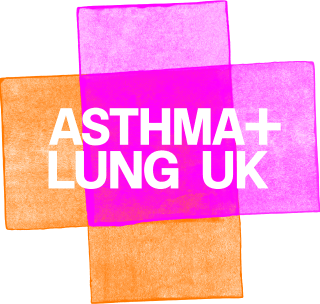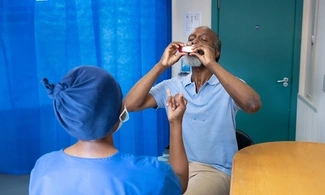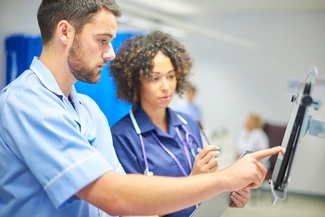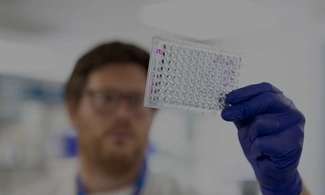Home oxygen equipment
There are three types of devices that deliver oxygen:
- oxygen concentrators
- oxygen cylinders
- liquid oxygen units.
Your oxygen supplier will service your equipment at least twice a year to make sure it is still working properly and replace it if it is not.
Oxygen concentrators
An oxygen concentrator is a machine about the size of a bedside table. You plug it into an electrical socket.
It takes oxygen from the air in the room and delivers it to you through short tubes that go in your nose (a nasal cannula) or face mask. The machine should be installed with enough tubing for you to move easily around the house. The tubing can be fixed around the floor or skirting board of your house to prevent trip hazards.
Your oxygen supplier will refund the running cost of the concentrator on behalf of the NHS. They will take a meter reading from the machine when they install it and each time your machine is serviced.
Your supplier should also provide a back-up oxygen cylinder in case your concentrator breaks down.
If you have been prescribed ambulatory oxygen therapy, you may be supplied with a portable oxygen concentrator. This is a small machine which can be carried using a shoulder strap or specialist backpack. It weighs around 2kg and runs on a rechargeable battery.
What is ambulatory oxygen therapy?
Ambulatory oxygen therapy is portable oxygen that you can use when you’re moving around. It usually uses either a portable oxygen concentrator or an oxygen cylinder. These are carried using a shoulder strap, backpack or trolley.
Oxygen cylinders
Oxygen cylinders contain pressurised oxygen. This means the oxygen gas is compressed so more can fit in each cylinder.
Large oxygen cylinders are usually used if you only need oxygen for a short time, or as a backup for your concentrator machine.
Portable oxygen cylinders can be used for ambulatory oxygen therapy. They weigh around 2 to 3kg and fit inside a backpack or trolley. They provide around three hours of oxygen, depending on your flow rate. You may be given an oxygen conserving device, which makes the supply last longer. Make sure you reorder portable cylinders when you have at least one working day’s supply left.
Liquid oxygen units (LOX)
Liquid oxygen is a way of storing more oxygen, so it is sometimes used for people who need high flow rate of oxygen.
It is stored in large base units which you use to fill smaller portable units. Liquid oxygen units must be stored in well-ventilated rooms on the ground floor of a property. Make sure you reorder liquid oxygen base units when you have at least one working day’s supply left.
How do you breathe oxygen in?
You can breathe in the oxygen either through:
- short tubes placed in your nostrils (a nasal cannula)
- a mask that goes over your nose and mouth.
Most people who have home oxygen therapy use a nasal cannula because it is more comfortable. Some people need to use a mask if the cannula makes their nose sore or they need a very specific amount of oxygen.
Make sure you clean your cannula or mask every day. A cannula can be cleaned with a disinfectant wipe or warm soapy cloth. Masks should be cleaned in warm soapy water.
Do not use petroleum-based products
If your cannula makes your nose dry, do not use petroleum-based products like Vaseline, as they are flammable. Use water-based alternatives like KY Jelly. Your pharmacist or healthcare professional can help you find the right product.
How is oxygen and oxygen equipment supplied?
When your healthcare professional prescribes home oxygen therapy, they will complete a Home Oxygen Order Form (HOOF) and send it to your home oxygen supplier.
You will also be given a Home Oxygen Consent Form (HOCF) to complete, which gives permission for your details to be shared with the supplier.
The supplier will then contact you to organise delivery of the equipment. When they deliver it, the supplier will explain how to use it.
Home oxygen suppliers
There are four companies which provide home oxygen in the UK. Different regions are supplied by different companies. Each company has a 24-hour contact number to call if you have any problems with your oxygen.
Air Liquide
- London: 0808 143 9991
- South West: 0808 143 9999
Baywater Healthcare
- The East of England, North West of England, Yorkshire and The Humber, West Midlands and Wales: 0800 373 580
BOC
- The East Midlands and Northern Ireland: 0800 136 603
Dolby Vivisol
- The North East of England and the South East of England: 0800 917 9840
- Scotland: 0800 833 531

Get support
Call our helpline for support with your condition. Get advice on your medicines, symptoms or travelling with a lung condition, or just call us to say hello.








